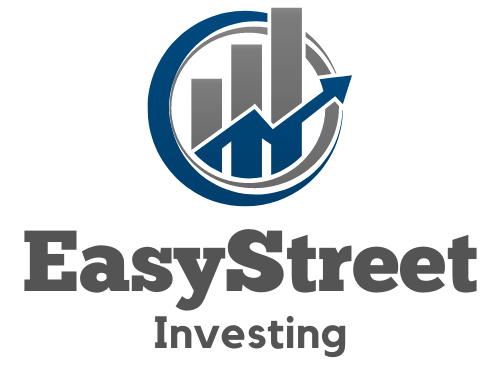Stepping into the world of real estate investment, one can’t ignore the growing trend of peer-to-peer lending. It’s a game-changer for both seasoned investors and eager newcomers. This innovative approach connects borrowers directly with lenders, cutting out traditional financial institutions. In this article, we’ll explore how harnessing this method could transform your next property venture. You’ll discover the ins and outs of sourcing funds, managing risk, and maximizing returns.
Imagine funding your property dreams without the red tape of banks. That’s what peer-to-peer lending offers: a straightforward path to capital. Whether you’re looking to refurbish a fixer-upper or jump-start a development project, you’ll learn how to tap into this community-driven financial pool. We’ll guide you through building strong investor relationships, ensuring your projects don’t just get off the ground but soar. Get ready to unlock the door to a more dynamic way of financing your real estate aspirations.
Important Highlights
1. Peer-to-peer lending (P2P) is revolutionizing the way investors fund real estate projects by offering a platform for borrowers to connect directly with individual lenders, bypassing traditional financial institutions. This innovative approach provides borrowers with more flexible terms and potentially lower interest rates while offering lenders the opportunity to invest in real estate ventures which might have been previously inaccessible.
2. For those looking to diversify their investment portfolio, P2P platforms offer a unique avenue to participate in the real estate market. Investors can select from various projects, ranging from residential flips to commercial developments, enabling them to spread risk across different property types and geographic locations.
3. Real estate developers benefit from P2P lending by gaining access to a broader pool of funds, facilitating quicker financing for their projects compared to traditional bank loans. The streamlined application process on platforms like Prosper or LendingClub can lead to faster approval times, helping developers keep their project timelines on track.
4. Risk management is a critical aspect of P2P real estate investing; both borrowers and lenders should perform due diligence. While lenders need to assess the viability and profitability of potential investments carefully, borrowers must ensure they maintain strong credit profiles and present sound business plans to attract funding.
5. The regulatory environment surrounding peer-to-peer lending is continuously evolving, with authorities aiming to protect stakeholders without stifling innovation. Staying informed about current laws and regulations through resources like the Securities and Exchange Commission is essential for participants to navigate this dynamic landscape successfully.
Understanding Peer-to-Peer Lending in Real Estate
Peer-to-peer (P2P) lending platforms connect investors directly with real estate developers seeking funds for their projects. This alternative finance method bypasses traditional banking systems, allowing for a more direct investment route. Participants can either fund a portion of the loan or the entire project, depending on their investment capacity.
Real estate P2P lending typically offers potentially higher returns compared to savings accounts or bonds. The risk associated is also diversified when investing in multiple properties or projects. However, as with any investment, due diligence is crucial before committing funds.
Selecting the Right P2P Platform for Real Estate Investments
Choosing a reputable P2P platform is essential for a successful investment experience. Prospective investors should evaluate platforms based on their track record, transparency, and user reviews. It’s important to understand the fees involved, the user interface, and the level of customer support provided.
Investors must also look at the types of real estate projects available on the platform and whether these align with their investment goals. Some may offer residential projects while others focus on commercial real estate developments.
Risks and Mitigation Strategies in P2P Real Estate
P2P lending for real estate isn’t without risks. Project delays, market downturns, or developer insolvency can affect returns. To mitigate these risks, diversification across different real estate projects and geographical locations is advisable. Investors should also scrutinize individual project details such as expected timelines, property valuations, and developer’s financial health.
An assessment of local real estate markets can also provide valuable insight into potential risks and opportunities. By understanding market trends, investors can make informed decisions about which projects are more likely to succeed.
Leveraging Tax Advantages with Peer-to-Peer Lending
Tax implications vary by country but often there are benefits associated with investing in real estate through P2P lending. For example, certain tax regimes allow investors to deduct bad debts or enjoy tax-free interest earnings up to a threshold within an ISA (Individual Savings Account) framework.
Consulting with a tax professional is recommended to optimize tax efficiency and ensure compliance with local regulations when engaging in P2P lending for real estate projects.
Funding Real Estate Projects: Loan Terms and Interest Rates
Funding terms vary widely among different P2P platforms and projects. Interest rates are generally competitive and reflect the level of risk associated with the project. Investors should compare terms carefully, taking into account loan duration, loan-to-value ratios, and repayment structures—whether they are interest-only or amortizing loans.
Negotiating terms may be possible on some platforms, especially for larger investments or experienced investors with a proven track record.
Streamlining Due Diligence in Real Estate P2P Lending
Diligent evaluation is paramount prior to funding a project through peer-to-peer lending. This involves analyzing the developer’s history and reputation, assessing feasibility studies and business plans for the project, as well as understanding legal frameworks including liens or first claim rights on assets.
Many platforms provide due diligence tools or services to assist investors in making informed choices. These resources can streamline the process significantly while ensuring thorough analysis.
Evaluating Exit Strategies Before Investing
An exit strategy should be clear from the onset of any real estate investment made through P2P lending. Consider scenarios such as early loan repayments or what happens if a borrower defaults. Some platforms offer secondary markets that enable investors to sell their stake in loans before maturity.
The Role of Insurance and Guarantees in P2P Lending
To further protect investments against unexpected losses, some peer-to-peer lending platforms offer insurance products or guarantees on loans. Risk mitigation strategies , including provision funds or buyback guarantees from loan originators, can provide an additional layer of security.
Maintaining Liquidity in Your Investment Portfolio
Balancing liquidity while investing in long-term projects is crucial for maintaining financial stability. Investors should consider their overall portfolio liquidity before locking funds into longer-term loans offered by many real estate P2P lending projects.
Incorporating Technology and Automation Tools
To optimize investment strategies in peer-to-peer lending for real estate projects, automation tools can play a significant role. Many platforms now offer auto-invest features that automatically allocate funds based on predefined criteria set by the investor.
Growing Trends in Green Real Estate Projects via P2P Lending
Sustainable development has become increasingly popular among both borrowers and lenders within the P2P space. Eco-friendly real estate projects not only contribute positively to environmental efforts but may also qualify for special grants or subsidies enhancing their attractiveness as an investment option.
How Can You Maximize Returns While Minimizing Risks?
- Evaluate each real estate project thoroughly before investing; understand its scope, potential returns, and associated risks.
- Diversify your investments across various properties and types of real estate to spread risk effectively.
- Stay informed about market trends affecting property values and rental demand in areas where you have invested.
- Consider tax implications carefully; seek professional advice if necessary to take advantage of any available tax benefits related to your investments.
- Always have an exit strategy planned out before committing funds to any particular project within peer-to-peer platforms.
- Maintain an appropriate balance between liquid assets and long-term investments within your overall financial portfolio.
- Leverage technology such as auto-invest features provided by many P2P platforms for efficient capital allocation according to your personal investment criteria.
- Mindfully invest in green initiatives within the realm of real estate which could yield substantial future returns along with contributing towards sustainability goals.
Frequently Asked Questions
What is Peer-to-Peer Lending in Real Estate?
Peer-to-peer lending in real estate refers to a method where investors lend money directly to property developers or buyers through online platforms, bypassing traditional financial institutions. This model allows for more direct investment into property-related projects with potentially higher returns.
How does P2P Lending differ from bank loans?
P2P lending typically offers a faster approval process and potentially lower interest rates compared to banks. The difference lies in the personal interaction between lenders and borrowers, which can make the borrowing experience more flexible and tailored.
Is Investing in Real Estate through P2P Platforms safe?
No investment is without risk, but many P2P platforms mitigate this by offering diversified portfolios, vetting borrowers, and sometimes providing a reserve fund to cover losses. However, it’s essential to do thorough research before investing.
Can I choose specific Real Estate Projects to invest in?
Yes, most peer-to-peer lending platforms allow you to select individual real estate projects that align with your investment goals and risk tolerance.
What are the typical returns on P2P Real Estate Investments?
Returns can vary widely based on project type and risk level but generally range from mid-single digits to the mid-teens percentage-wise annually.
Are there fees associated with P2P Lending for Real Estate?
Yes, platforms typically charge fees for their services, which may include origination fees, service fees, or a percentage of the return. It’s important to understand these costs upfront.
What minimum investment is required for Real Estate P2P Lending?
The minimum investment varies by platform but can be as low as a few hundred dollars, making it accessible for many investors.
How liquid is my investment in P2P Real Estate Lending?
Liquidity can be limited since your funds are usually tied up until the loan term ends or unless the platform offers a secondary market for selling your investment to other users.
What happens if a borrower defaults on a loan I invested in?
If a borrower defaults, the platform will typically handle debt collection. Some may have provisions such as buy-back guarantees or reserve funds to protect investors, but recovery is not guaranteed.
Do I need to be an accredited investor to use P2P platforms?
Some platforms require you to be an accredited investor due to regulatory reasons; however, others are open to non-accredited investors as well.
In Closing
Tapping into peer-to-peer lending for real estate endeavors opens doors for both investors seeking new opportunities and borrowers requiring funding outside conventional banking systems. The direct connection this form of lending provides can lead to mutually beneficial outcomes when approached with diligence and understanding of the risks involved. As with any financial venture, informed decisions backed by thorough research stand central to success.
In summary, while peer-to-peer lending presents an innovative avenue for diversifying one’s portfolio into real estate, it demands careful consideration of factors like risk tolerance, liquidity needs, and platform reliability. By engaging critically with these elements and observing due diligence, investors can navigate this emergent landscape with greater confidence and clarity.

